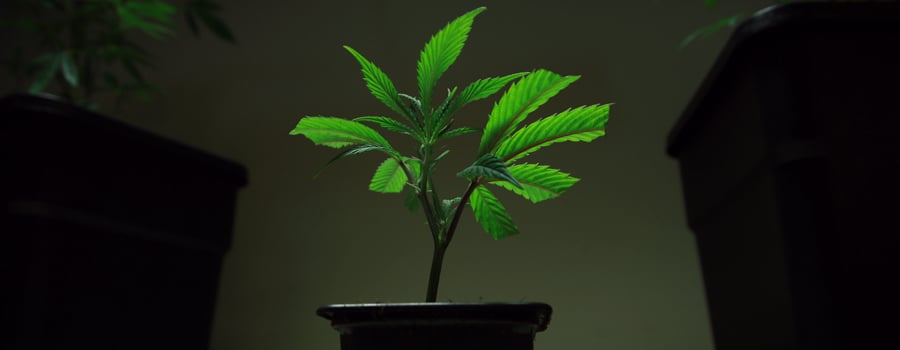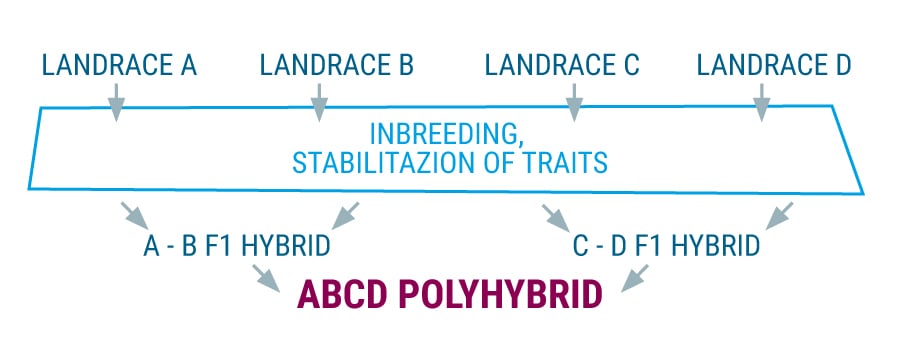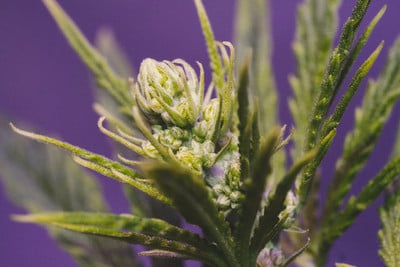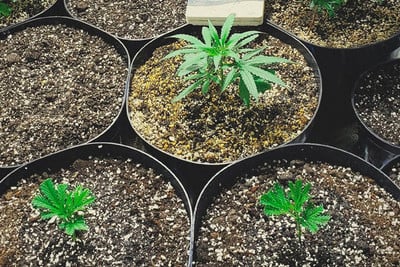.

Breeding And Preserving Cannabis Genetics At Home
If you're interested in breeding your own cannabis strain but find scientific jargon confusing, and graphs and punnet squares put you to sleep, this is the blog for you. We break down all you need to know about breeding marijuana at home and how to preserve those precious fire clone-only genetics. Practical advice without the academic speak.
Contents:
WHY DABBLE WITH CANNABIS BREEDING AND GENETICS?
Breeding cannabis and continuing a lineage in seed is not the exclusive preserve of the experts. Home growers that have acquired high-level cultivation skills and mastered the essential techniques can easily transition from grower to breeder. Creating new strains is very doable. Most of the cannabis strains that have become legends were created by home growers. On occasion even by accident.
While it might not be possible to build your own seed bank from the grow tent in the spare bedroom. Small-scale breeding is a viable option. You don't need a master's degree in plant genetics. Just good old-fashioned dope growing experience will suffice.
Time in the grow op will have already given you a keen eye for pheno hunting.
HOW TO PRESERVE PRECIOUS MARIJUANA GENETICS
CLONING
Taking cuttings from cannabis plants is a great way to preserve a strain. Sometimes prized varieties are available in clone-only form, and the grower has little option other than continuing to take cuttings in order to preserve the genetics.
Cloning is a transferable skill and even more essential to cannabis breeders than growers. You need to have a consistently high success rate with cloning as a prerequisite to breeding.

SELFING
S1 seeds can be produced with just a female marijuana clone. These seeds carry only the genetic information of the mother. In order to accomplish this, the grower must reverse the sex of the female to induce male flowers and achieve self-pollination.
Most home breeders will purposefully stress the plant to induce male flowers and produce a few seeds. Selfing is commonly applied to clone-only marijuana varieties to convert them to S1 seed form. Additionally, all the seeds obtained will be feminized.
SMALL SCALE BREEDING OPTIONS
BREEDING FROM THE SAME BATCH
Ok, so if you are happy with a batch of regular cannabis seeds. Perhaps you want to make use of the males? Well, you can cross cannabis from the same batch. Assuming you are familiar with the strain and are growing from the same pack of seeds, you can potentially select a male and female to cross.
This is an old-school method mostly applied outdoors. Although, breeding from the same batch can also be applied indoors, allowing for more control over pollination. If you succeed, the resulting progeny will be more or less stable, and you will have saved cash on seeds for the next crop.
Before further breeding experiments, it’s no harm to practice collecting pollen and making seeds first. Breeding from a reliable batch is a good introduction to cannabis breeding.

POLYHYBRIDS
A polyhybrid is simply a strain that results from crossbreeding two different strains. When different landraces are crossed, this results in a hybrid, which is a term used to tag the offspring derived from the cross of two different sources.
However, if a hybrid cultivar is bred with another cultivar from a different genetic line, a polyhybrid is formed. Hybrids already possess varying genetic traits from both parents, meaning polyhybrids are even more diverse and unpredictable in the traits they possess. Creating polyhybrids is a great breeding method as it allows you to combine unique traits from a wide spectrum of cultivars. Although, as you can imagine, these strains are quite unstable and heterozygous. It takes some solid work to stabilise these varieties and ensure that their offspring are more uniform.
BREEDING POLYHYBRIDS AT HOME
Breeding cannabis requires quite a lot of space and a considerable number of plants. You need a nursery and propagation area and different rooms for male and female specimens to avoid unwanted cross-pollination. Even more space is needed if you intend to start breeding polyhybrids over multiple generations starting with four different cultivars. If you intend to begin this process, you’ll need to learn how to pollinate your flowers in the correct way.
Seeing as you’re considering breeding, you are probably already well aware of this fact, but it’s always worth reiterating: Keep your males away from your females! This is especially important when looking to breed a polyhybrid because of the increased chances of breeding the wrong varieties together.
First off, you’ll need to collect pollen from male plants when the time is right. Pollen is ultimately plant sperm, and is needed to fertilise female flowers to make them produce seeds. When the male pollen sacs have opened, place a sealable bag over the plant and give it a shake.
Female plants are ready for breeding during the early flowering phase when small, white pistils start forming. These “pre-bud” structures are basically little hairs that protrude from the calyx to catch pollen. Next, isolate the chosen female plant to further prevent any unwanted fertilisation. Consider setting up a specific fertilisation area to avoid any mishaps.
To pollinate female plants, place the pollen bag over branches that show bud formation. Seal the bag over individual branches and shake again. Leave it there for around 1 hour and repeat the process with each branch that bears buds.
It’s vital to document everything you do when breeding cannabis, especially during the more complex process of creating polyhybrid strains. It’s easy to mix up genetics and lose track of which male you bred with which female, and what strain each of them is. It’s best to tag every plant individually so they can be easily identified. It’s also a good idea to create a spreadsheet or draw out a flowchart on a whiteboard to keep track of every cross you’ve made with each individual plant. Add dates beside every documented task to help you estimate waiting periods accurately.
GENUINE F1 HYBRIDS
Genuine F1 Hybrids are the jewels in the crown of the Royal Queen Seeds catalog. The cold truth is that creating fantastically potent, productive, and vigorous F1 hybrids is a long-term, very complex process. Professional breeders invest years of their lives into breeding projects and select cultivars from hundreds if not thousands of cannabis plants.
Genuine F1 hybrids can only be derived from crossing pedigree stabilised strains or inbred lines. They express genuine hybrid vigour. Unless you’re planning a strain hunting expedition, tracking down heirloom landrace seeds is hard graft. It’s probably more convenient to stick with the RQS catalog for awesome hybrids.
In short, breeding F1 hybrids can be complicated. Honestly, it's far too demanding for the first time home breeder. By crossing a pair of F1s (first generation) the resulting progeny is the F2 (second generation). Unfortunately, F2 seeds will be far less stable and far more difficult to work with than the previous F0 ozeneration.
Careful selective breeding in large numbers is required to succeed with this approach. Often, it takes multiple generations of breeding—perhaps until F5 (fifth generation) or even F6 (sixth generation)—before the line can be stabilised and an F1 hybrid can be produced.

BACKCROSSING
Have you ever purchased the same cannabis strain multiple times and noticed that it looked completely different each time? Maybe it even tasted slightly more sweet or sour than before. Or maybe you’ve grown the same strain repeatedly and realized how different one plant looked from the next? These differences within the same strain are referred to as genetic variability. Even though plants share the same lineage, their unique genetic expression, or phenotype, is a result of how their genetics respond to the environment.
Differences in phenotypes can manifest as variability in size, resin production, color, and so on. Strains can also vary in their chemotype. This refers to the chemical constituents that they manufacture. One plant might have higher levels of a specific terpene, whereas another may have slightly higher levels of CBD. If you germinated a bag of seeds that all shared the same lineage and noticed a large difference between the phenotype of each plant, this would mean that the strain is unstable, and that the seeds are heterozygous. Although this isn’t necessarily an issue for hobby growers, it can become problematic for commercial growers looking for strict consistency among their crop.
This consistency is possible, and can be achieved by stabilising the genetics of a strain. This will then produce seeds that are more homozygous, featuring significantly less variability between phenotypes. But how can breeders go about stabilising a strain?
The main way to achieve this is through selfing over several generations. However, another common way to achieve this is called backcrossing, also known as “BX” within the cannabis breeding lexicon. When breeders are aiming to create a new strain, they select two parent strains with desirable traits. Upon crossing them, the first generation is created. Backcrossing essentially refers to taking a member of this generation back up the family tree to breed it with one of its parent strains. This breeding technique helps to fix the presence of one or several of the parent’s genes in the other parent's genetic background by breeding them together repeatedly.
For example, if the female parent strain was particularly high in CBD, by breeding her with one of her male offspring that also shares this trait, the plants of the next generation will be even stronger in the trait. This is because they will contain more of the mother's genetic material than the original male parent.
Although backcrossing is a tried and tested way to stabilise cannabis genetics, excessive backcrossing can cause some issues. By inbreeding plants to such a degree, any recessive genes that produce undesirable traits will also be strengthened and passed down to all plants of subsequent generations.
As you can see, there are quite a few ways to preserve your favorite strains, and turn them into new strains of their own. This guide is meant to give you a good general overview to get you started, before delving into the more complicated aspects of it.
Good luck!







































